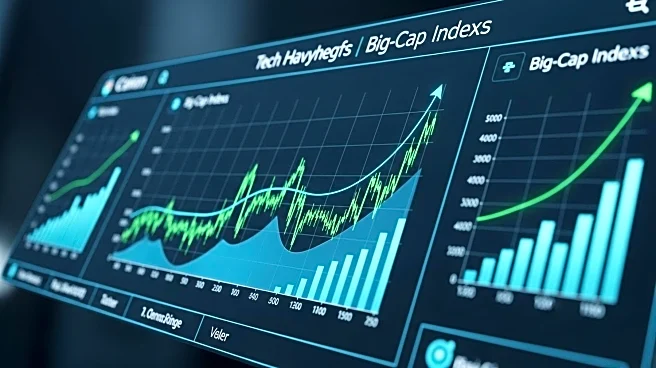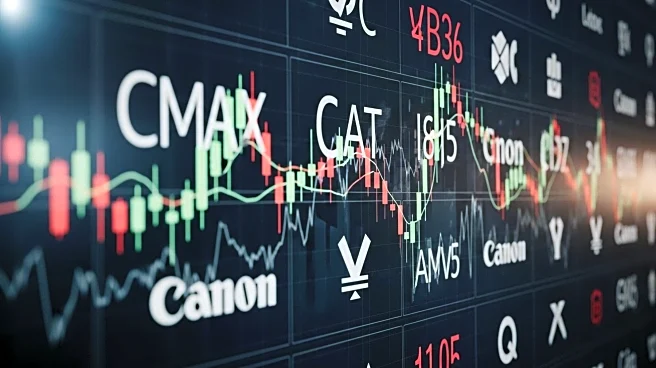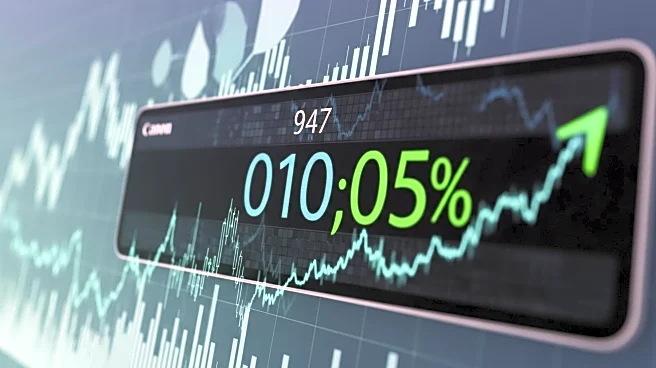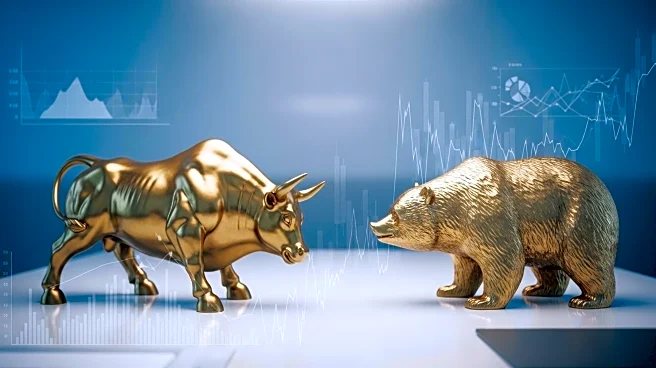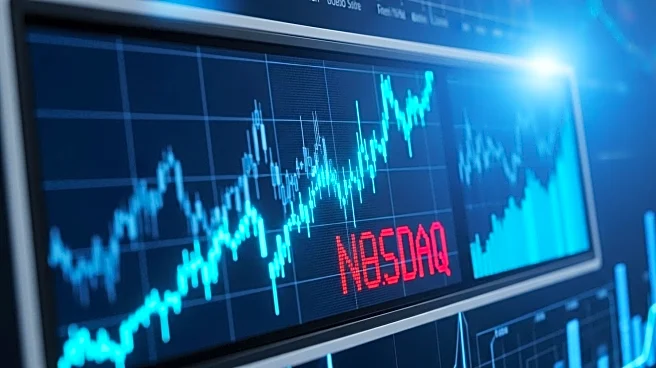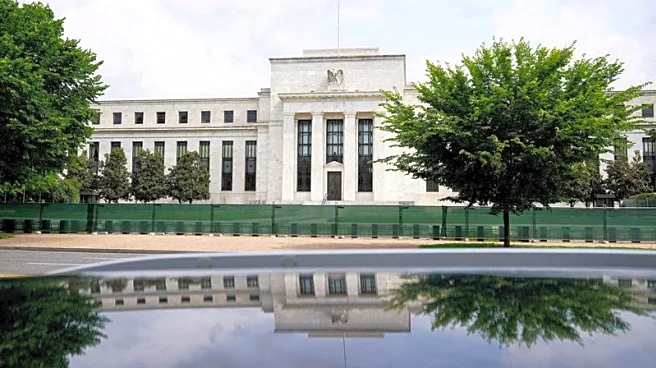What's Happening?
The U.S. stock market continues to reach new heights, driven by gains in major technology companies. Apple has benefited from increased expectations for its latest iPhone models, contributing to the upward momentum. Despite a general market pause, the small-cap Russell 2000 index has pulled back slightly after achieving a new high for the first time in nearly four years. This movement is seen as a potential signal for a broader market recovery. Bond yields have risen following a recent Federal Reserve rate cut, but this has not alarmed equity markets or inflation watchers. Stocks like Tesla, Palantir, and Robinhood have seen significant gains, reflecting renewed interest from traders. Analysts are drawing parallels between the current market cycle and the late-1990s tech bubble, suggesting that further growth and speculative activity may be ahead.
Why It's Important?
The performance of tech heavyweights is crucial for the overall health of the U.S. stock market, as these companies often drive major indexes. Apple's success with its iPhone models indicates strong consumer demand and innovation, which can boost investor confidence. The Russell 2000's movement is significant for small-cap stocks, which are often seen as indicators of economic recovery and growth potential. Rising bond yields could impact borrowing costs and investment strategies, but the current market response suggests stability. The comparison to the 1990s tech bubble highlights the potential for continued market expansion, though it also raises concerns about speculative excess and volatility.
Beyond the Headlines
The current market dynamics reflect broader economic and policy conditions, including Federal Reserve actions and investor sentiment. The focus on tech stocks underscores the importance of innovation and consumer technology in driving economic growth. The parallels to past market cycles suggest that investors should be cautious of potential bubbles and ensure diversified portfolios. The role of charismatic founders and high valuations in attracting investor interest highlights the cultural and psychological factors influencing market behavior.

